Ali Richardson's metal masterclass
The UK's metal drumming star shares his wisdom
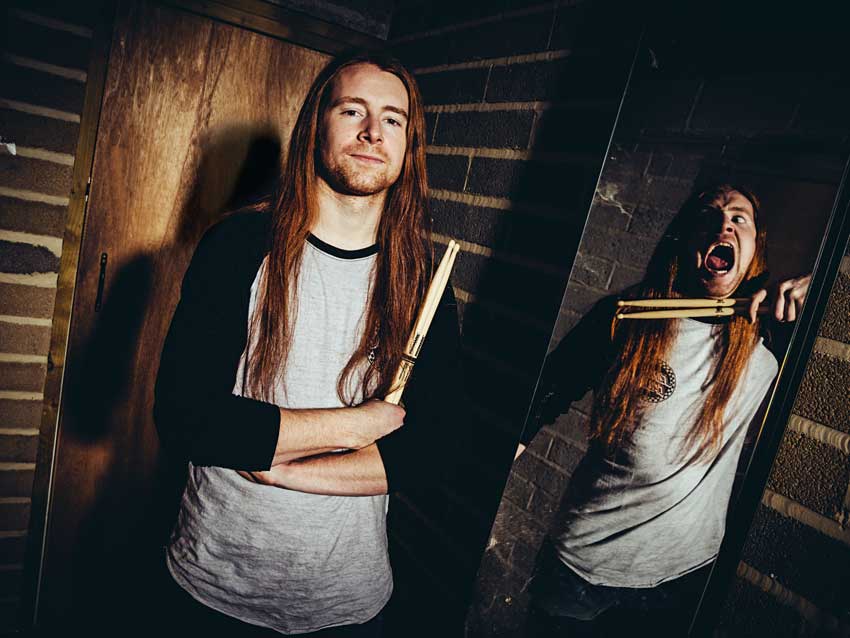
The drummer
Tearing it up with Scottish metal band Bleed From Within and now providing the power behind Reading’s death metallers Sylosis, Ali Richardson is reaping the rewards of a decade of dedication to metal drumming. But the drums weren’t even his first instrument.
“I actually used to play clarinet before I was a drummer,” says Richardson, who grew up listening to his brother’s Queen records. “I always thought I was a ginger Roger Taylor,” he says. “But at 13 I heard Pantera for the first time and that’s what drew me to the drum kit. That changed everything, so I went from being a clarinet player to a drummer.”
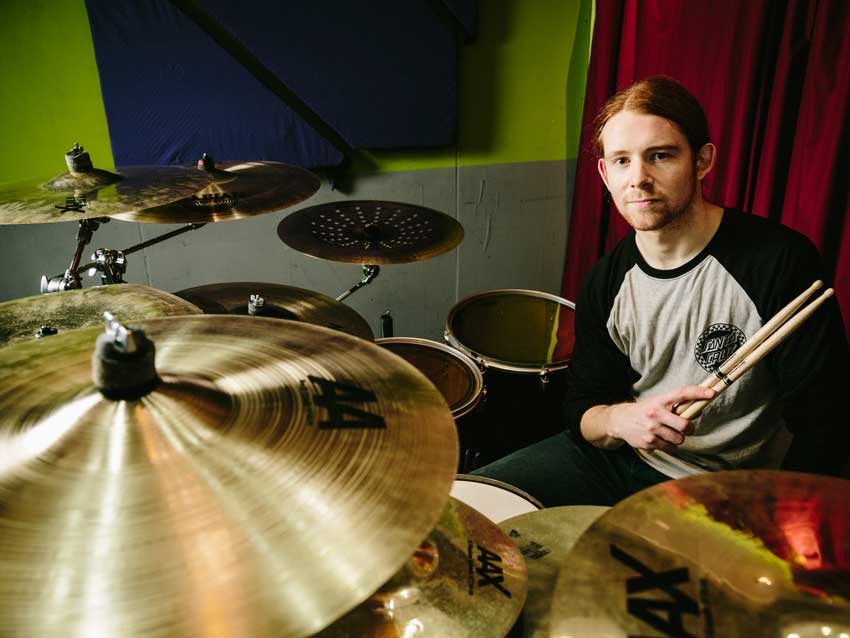
The Sound
“Going into the studio for [Bleed From Within’s latest album] Uprising, we worked with Romesh Dodangoda, a good friend of mine. I’d spoken with him about doing a metal album because I always thought he could harness the actual sound of the kit and the energy that’s there when you don’t overproduce stuff. So he suggested Monnow Valley [studios]. He sent me some photos of the studio and it just looked insane. He’s like, ‘Honestly Ali, this is the best place for you, the best place for your kit.’
“The kit seemed to sing in there. Behind where the drummer sits there is a big glass room almost like a conservatory. It basically provides you with loads and loads of natural reverb. You can pull shutters across to control how much reverb you’re getting and there was a mic in the centre of that room and then two room mics in the back corners.
"As soon as we started tracking, I listened to the first couple of takes, he was bringing the fader up on the mics in that glass room, I was like, ‘Oh my god! This is the sound I’ve been looking for all these years.’ It sounds big but it’s still tight, it’s natural, it’s punchy as hell. That’s what I was really going for on Uprising – it still has to be metal, it has to be tight, it has to have the clicky bass drum to help bring the guitars out – it was big and natural and it had life to it. That’s what I’ll continue to try to find throughout the rest of my career. I hate things that are like, ‘Oh, we can record it anywhere because we’ll put some samples over it.’ It’s not the way things should be done. What’s the point? You get this lovely drum kit, you spend hours tuning it and then you might as well program it, mate.”
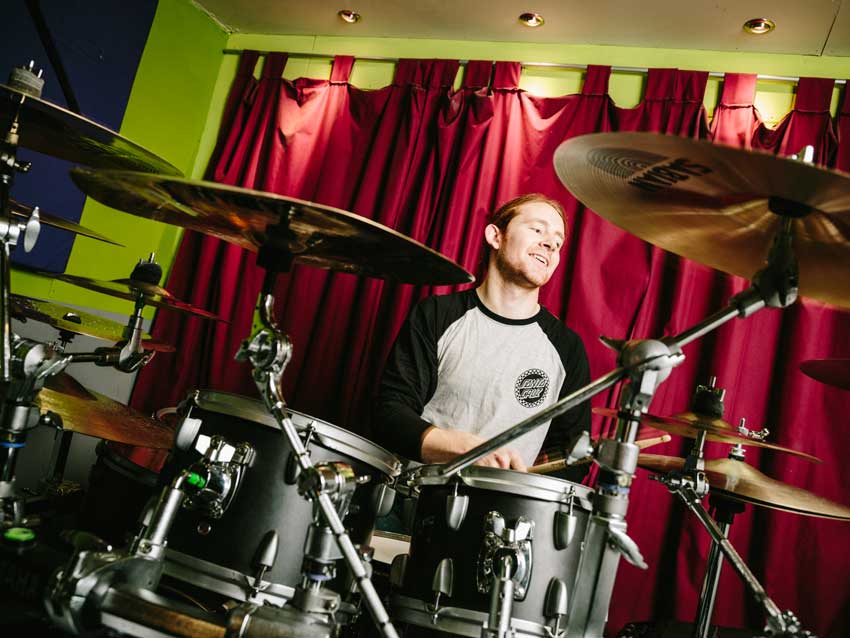
The influences
“I met [Vinnie Paul] once at a nightclub in London, he was talking to Rob Flynn from Machine Head for about two hours and I just sat there and stalked him, waiting for my opportunity. Rob Flynn went to the bar, I’m like, ‘Vinnie!’ I’ve got a Cowboys From Hell tattoo on my right arm, I showed him the tattoo, ‘You’re the only reason I started playing drums.’ He was like, ‘Hell yeah, brother.’ He’s such a cool guy. He’s the main reason I put down the clarinet, so I’ve got a lot to thank him for.
“That’s another thing I think is missing from a lot of modern metal music, it’s something I think is overlooked, but groove is the heart of everything. Again, Mario is one of those guys. Dirk Verbeuren – we toured with Soilwork a few years ago and Dirk’s playing is incredible. If you take the guitars out and just listen to the drum tracks, you’re like, is that a metal song? What’s going on here? Groove is the centre of it all.”
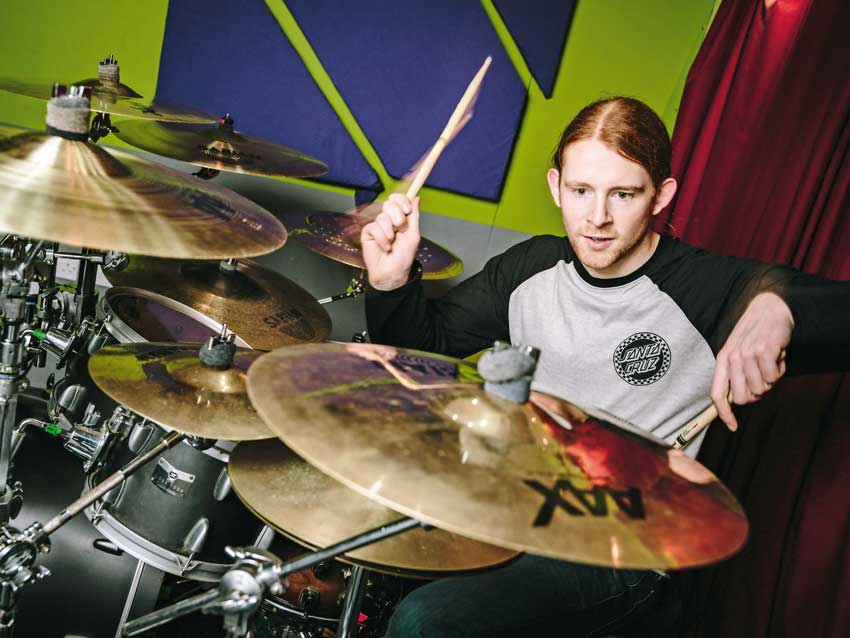
The mindset
“I’ve definitely noticed a change in myself and my playing [since joining Sylosis]. I am playing the drum kit more because I have to. We’re currently writing a new Bleed From Within album so we’re in the studio two or three times a week writing but then I’m up there on my own maybe two days learning Sylosis’ material, tracks they’re potentially going to have in the set-list.
“We are going to write a new album. Josh [Middleton, Sylosis vocalist/guitarist] is really excited to get started on some new material that we can work together on, I can put my sound to the Sylosis sound, but I don’t want to change anything too much, if that makes sense. They’ve got a sound that they’ve made and Josh is very particular about how that is. It definitely helps having more than one project. If I wasn’t in Sylosis then I’ve got the teaching as well, but I’d be looking for something in Glasgow, a little thing on the side. You need to keep yourself busy, exercising the mind.”
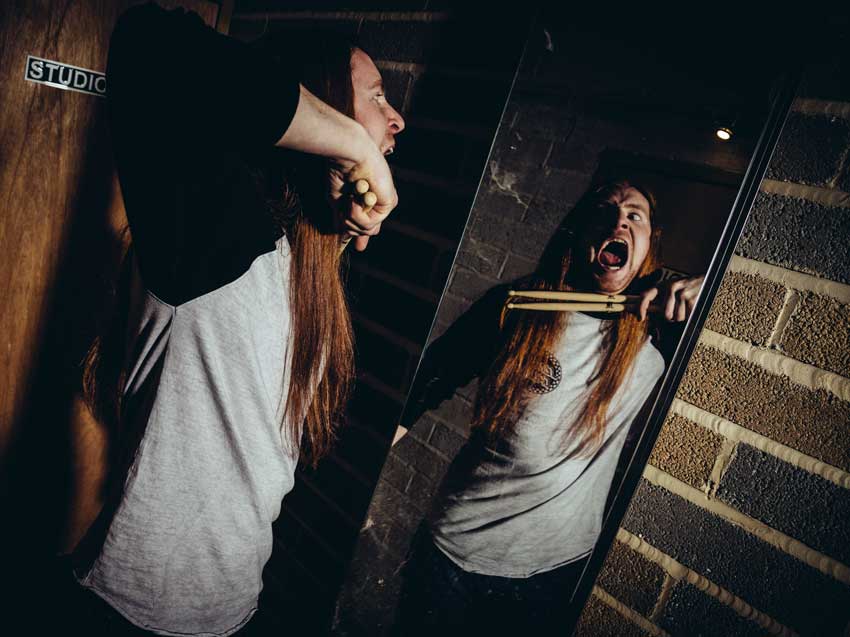
The music
“To someone who doesn’t listen to a lot of metal music then Bleed From Within and Sylosis could be considered quite similar but Bleed From Within is quite modern metal and Sylosis, while being modern, has a bit more of a traditional approach.
"Drumming-wise, Bleed From Within, my style of playing, I’m very stoppy-starty, quite fidgety I guess behind the kit, whereas with Sylosis there’ll be a consistent, solid double-bass part, 200bpm for 16 bars with no fills. I would usually break up something like that with a fill in the middle just to keep the consistency and the power. I learned a lot about myself as a drummer and I realised I could push myself. With Sylosis it’s a very different ball game.”
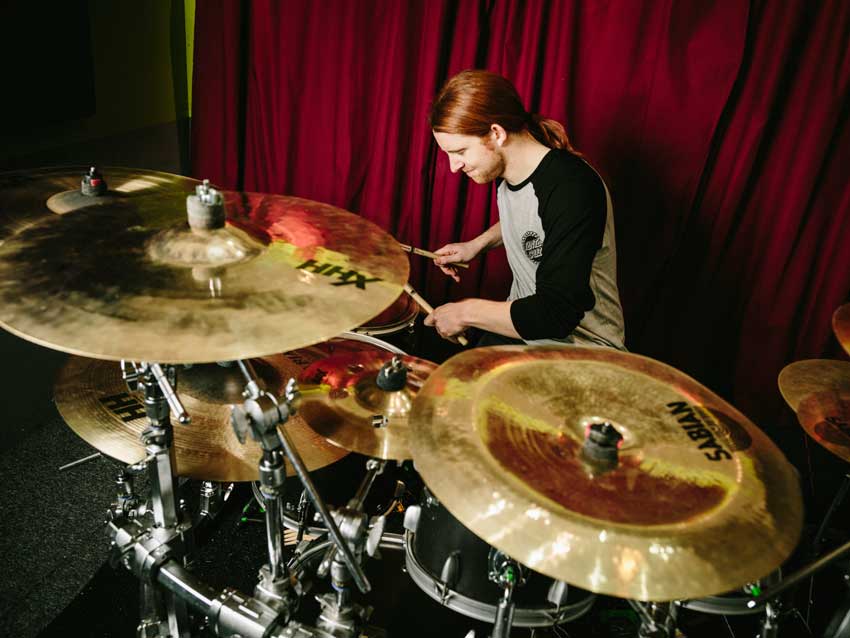
The band
“Sylosis is a very guitar driven band. When I was learning the songs there were parts when the drum kit wasn’t following the guitars and I was just having to refrain from following what the guitars do because in Bleed From Within that is very much the base, that’s how me and Goonzi [//Craig Gowans//] have always written the songs. Goonzi comes up with a lot of ideas rhythmically for the drums, so he’ll maybe think of a rhythm in his head and then make a guitar part around it
"‘Escape Yourself’ on Uprising, I wrote three minutes of drums and then the guitars were written around that. Bleed From Within definitely works the way with the kick drum in perfect synchronisation with the guitars whereas Sylosis I’d say is a little different. The guitars are so prominent in Sylosis, they can carry it percussively almost.”
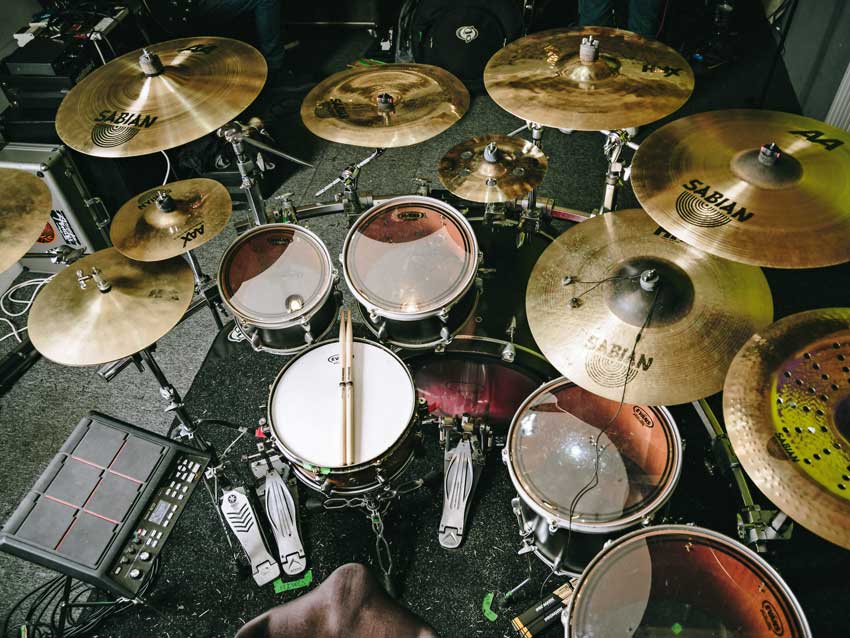
The gear
“I’m actually playing Yamaha at the moment. They got in touch with me in 2010, Bleed From Within were about to head out on tour with All That Remains and Soilwork. Somebody mentioned my name to them and I ended up getting a phone call and they offered me the Rock Tour Custom.
“What a kit! It’s amazing. Mahogany shells but no one can believe the sound I get out of these toms and especially the kick drum. The kick drum weighs next to nothing, it’s like a paperweight almost, and everyone who has picked it up is like, ‘Is the drum even in this bag?’ Then we set it up and start playing and everyone’s like, ‘What triggers are you using?’ I’ve never used triggers.
"Triggers can work for certain styles of music and depending on what speed you’re playing at but I totally believe adding some dynamic live, even in metal music, is essential to the groove of a song. The kick drum needs to be big, natural, it can’t be that thin, electronic sound. I know people that have blended the two of them together and get quite a good sound, you can have a D6 mic on the front of the kick so you get the balls, so to speak, and then mix that with a triggered sound, but two mics on your kick, you can’t go wrong.”
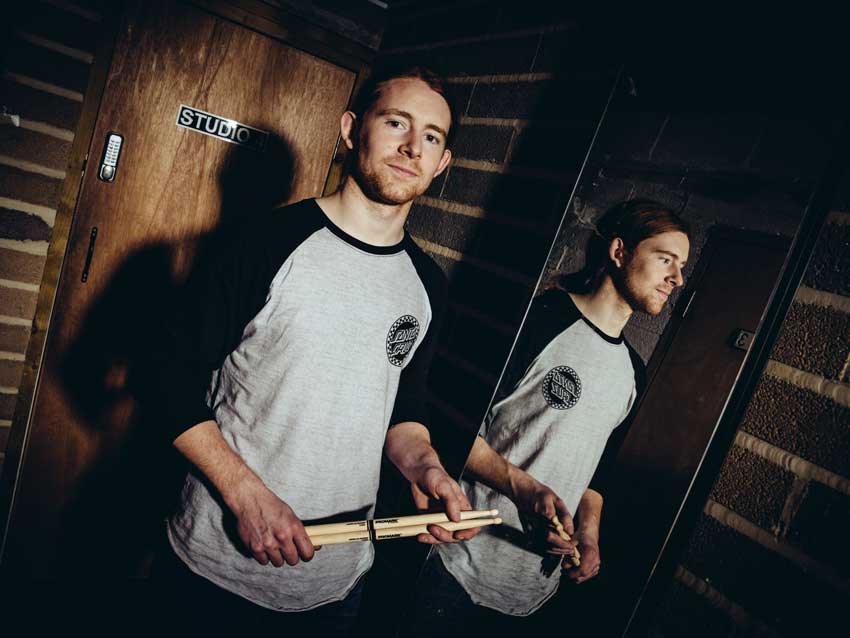
The gig
“In Sylosis it’s probably the fastest songs [that are most challenging], I need to take a deep breath before they start like, ‘This is going to kill me.’ Especially the gig we played last week. We played for just over an hour, and I don’t know why I agreed to the set list but the last five songs were the fastest songs in the set. I remember looking down at the set list seeing ‘Eclipsed’, ‘The Blackest Skyline’, ‘Teras’, ‘Empyreal’, ‘Altered States’, all the fastest songs.
“The venue was so hot you couldn’t breathe, I was sweating, there was sweat in my eyes, my sticks were sliding about, I took a deep breath and said, ‘Buck up, this is happening.’ In Bleed’s set, the end of a song called ‘Leech’, it took me hours to get it down in the studio. I literally sent everyone else out of the room, ‘I need half an hour to tighten this up and get this.’ It just taunts me. I can play it now, it’s fine, I’ve practised it endlessly, but there’s a break in the song before it kicks in and I’m like, ‘I’ll get you!’ I kind of look forward to it, even those challenging parts, those are the bits in the set where I’m like, ‘Right, I will nail you.’ They’re usually the tightest parts because I’m concentrating so much, usually the rest of it I’m having too much of a good time to process what’s going on.”
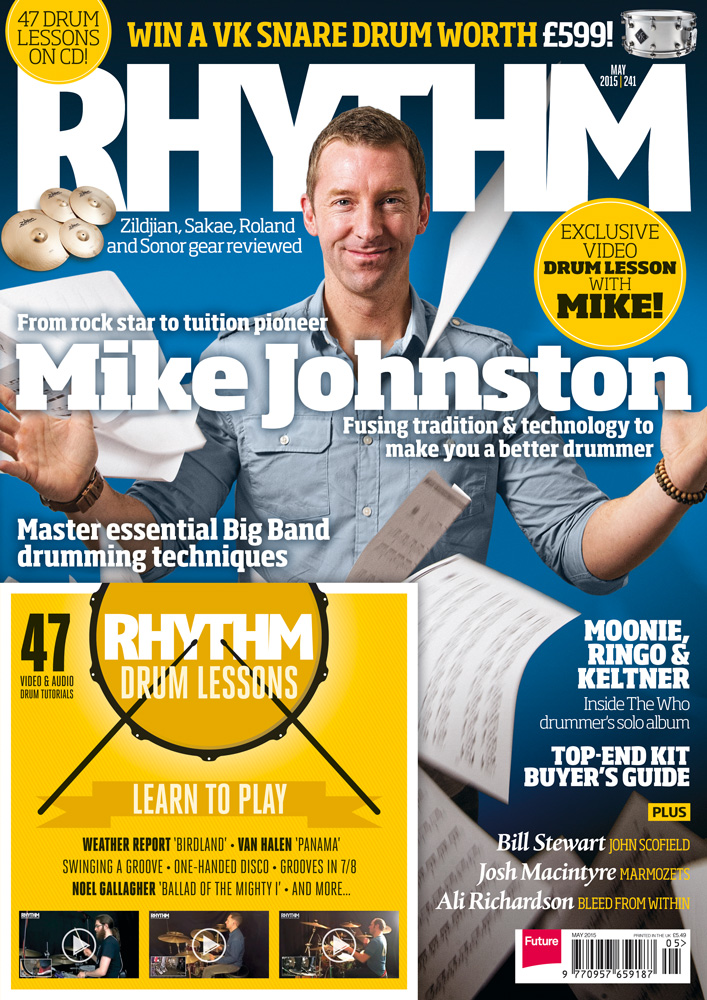
Want more?
You can read the full interview with Ali Richardson in the May issue of Rhythm which you can still get here!Each and every month Rhythm is packed to the gills with great interviews with the cream of the world’s drumming crop.